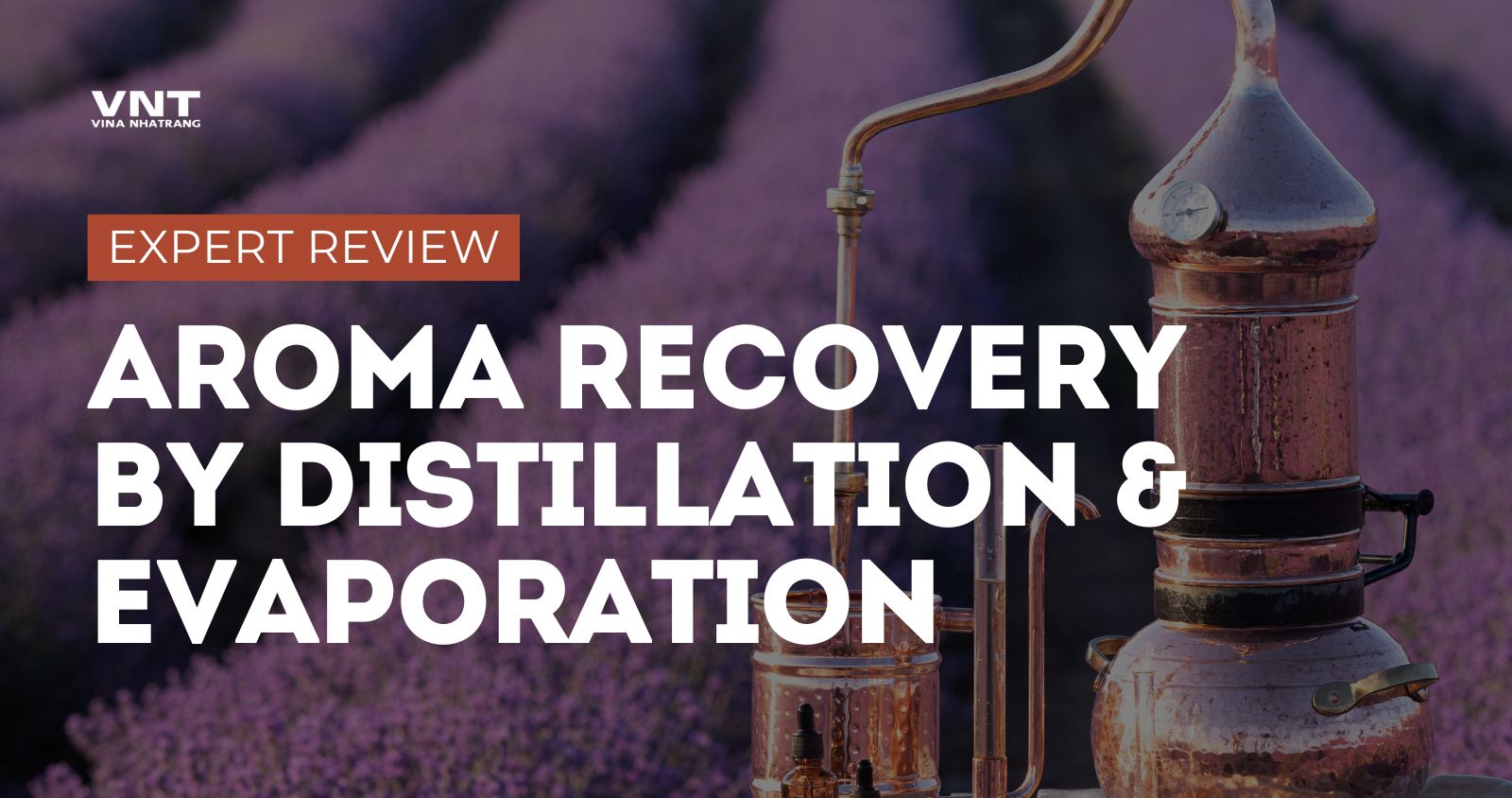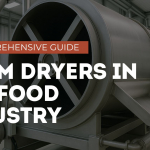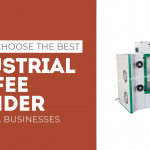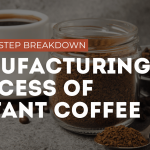Imagine sipping your favorite fruit juice, coffee, or wine—only to find that its aroma is weak or completely missing. The fragrance of a beverage is just as crucial as its taste, yet many of these delicate volatile compounds are lost during processing. Heat treatments, oxidation, and evaporation can strip away essential aromas, altering the sensory experience and diminishing product quality.
To combat this, the food and beverage industry relies on advanced aroma recovery techniques, with distillation and evaporation leading the way. In this article, we’ll explore how aroma recovery works and why distillation and evaporation are the gold standards. Whether you’re a food scientist, an industry expert, or simply curious about the chemistry behind your favorite drinks, this guide will break down the science in a clear and engaging way.
Aroma Recovery Through Distillation and Evaporation
Basic Principles
Distillation and evaporation utilize the fundamental concept of vapor-liquid equilibrium (VLE), where a liquid and its vapor reach a state of balance. This allows selective separation based on the relative volatility (α-value) of aroma compounds compared to water.
- Distillation relies on repeated vaporization and condensation cycles to concentrate and recover aromas.
- Evaporation leverages phase change (liquid to gas) to separate volatile components.
Types of Distillation for Aroma Recovery
Distillation is one of the most effective techniques for aroma recovery, utilizing the differences in boiling points and volatility between aroma compounds and water to separate and concentrate key flavor components. The choice of distillation method depends on the specific beverage, aroma sensitivity, and processing constraints. Here’s a detailed look at the most commonly used distillation techniques for aroma recovery.
1. Simple Distillation
Best for: Recovering highly volatile aroma compounds with distinct boiling points.
Simple distillation involves heating a liquid mixture to its boiling point, converting it into vapor, and then condensing the vapor back into liquid in a separate collection unit. This method is widely used for recovering volatile aromas from liquids like fruit juices, alcoholic beverages, and essential oils.
How It Works:
- The liquid is heated in a boiling flask until the most volatile components evaporate first.
- The vapor travels through a condenser, where it cools and returns to a liquid state.
- The recovered aroma concentrate is collected separately from the remaining liquid.
Advantages:
✅ Straightforward and cost-effective.
✅ Works well for simple aroma separations.
✅ Suitable for small-scale applications.
Limitations:
❌ Not ideal for complex mixtures with overlapping boiling points.
❌ Limited efficiency for separating multiple aroma compounds simultaneously.
2. Vacuum Distillation
Best for: Heat-sensitive aromas that degrade at high temperatures.
Vacuum distillation operates under reduced pressure, which lowers the boiling point of the liquid and minimizes thermal degradation of delicate aroma compounds. This technique is essential for fruit juices, dairy products, and heat-sensitive alcoholic beverages where maintaining the original aroma profile is critical.
How It Works:
- A vacuum pump reduces the atmospheric pressure inside the distillation system.
- The liquid is gently heated, causing volatile aromas to evaporate at much lower temperatures than in simple distillation.
- The vapor is condensed and collected as an aroma-rich fraction.
Advantages:
✅ Prevents heat-induced aroma degradation.
✅ Effective for retaining natural fruit and floral notes.
✅ Used in large-scale industrial beverage processing.
Limitations:
❌ Requires specialized vacuum equipment, increasing costs.
❌ More complex operation compared to simple distillation.
3. Fractional Distillation
Best for: Separating multiple aroma compounds with different boiling points.
Fractional distillation is a refined version of simple distillation, incorporating a fractionating column to enhance separation efficiency. This method is particularly useful when a beverage contains multiple aroma compounds that must be isolated and recovered individually.
How It Works:
- The liquid is heated in a boiling chamber, generating vapor.
- The vapor enters a fractionating column, which contains structured packing or plates that create multiple condensation-evaporation cycles.
- The most volatile aromas travel to the top of the column, while less volatile components condense and return to the liquid phase.
- The aroma-rich fractions are collected at different points based on their boiling points.
Advantages:
✅ Enables precise separation of multiple aroma compounds.
✅ Enhances aroma purity and quality.
✅ Used in essential oil extraction, alcoholic spirits refinement, and complex beverage processing.
Limitations:
❌ Requires precise control over temperature and pressure.
❌ Higher energy consumption due to repeated phase changes.
4. Steam Distillation
Best for: Extracting heat-sensitive aromas using steam instead of direct heat.
Steam distillation involves passing steam through a liquid or solid containing aroma compounds, helping extract volatiles without excessive heat exposure. This method is widely used in essential oil production, herbal infusions, and specialty beverage processing.
How It Works:
- Steam is introduced into the distillation chamber, where it mixes with the beverage or raw material.
- The steam carries volatile aromas into a condenser, where they are cooled and collected as a liquid distillate.
- Since the boiling point of water is lower than many aroma compounds, this method prevents thermal degradation.
Advantages:
✅ Gentle on delicate aromas.
✅ Preserves complex aroma profiles, especially in botanical extracts.
✅ No need for direct heating of the raw material.
Limitations:
❌ Less efficient for separating high-boiling-point compounds.
❌ Requires significant water and energy input for steam generation.
5. Spinning Cone Column Distillation
Best for: High-efficiency aroma recovery in beverages like wine, coffee, and fruit juices.
The spinning cone column (SCC) is an advanced distillation technique that uses centrifugal force and thin-film evaporation to separate and recover volatile aromas. It is widely used in the wine industry to remove alcohol while preserving delicate aroma compounds.
How It Works:
- The liquid enters the spinning cone column, where rotating cones create a thin liquid film.
- A controlled vacuum and steam environment cause the most volatile compounds to evaporate.
- The recovered aromas are condensed and reintroduced into the final product.
Advantages:
✅ Extremely precise aroma recovery with minimal heat exposure.
✅ Used for low-alcohol wine production, flavor enhancement, and aroma reintegration.
✅ Faster and more efficient than traditional distillation methods.
Limitations:
❌ High cost of specialized SCC equipment.
❌ Requires skilled operators for precise control.
Evaporation Techniques for Aroma Retention
Evaporation plays a crucial role in beverage processing, particularly in juice concentration, dairy processing, and essential oil extraction. However, it also poses a significant risk of aroma loss, as volatile compounds can be carried away with evaporating water. To mitigate these losses, specialized evaporation techniques have been developed to selectively remove water while retaining or recovering valuable aroma compounds.
These techniques use controlled temperature, pressure, and residence time to ensure that aroma loss is minimized while achieving the desired concentration effect. The most effective evaporation methods for aroma retention include:
1. Flash Evaporation
Best for: Rapid aroma separation and recovery before further processing.
Flash evaporation is widely used in fruit juice processing to remove excess water while preserving volatile aromas. The process involves subjecting the liquid to a sudden pressure drop, causing instantaneous evaporation of the most volatile components.
How It Works:
- The liquid is preheated to a temperature just below its boiling point.
- It is then introduced into a vacuum chamber, where the pressure is suddenly reduced.
- The rapid pressure drop causes a portion of the liquid to “flash” into vapor, carrying volatile aromas.
- The vapor is condensed and collected separately, ensuring that aromas are captured before the main evaporation stage.
Advantages:
✅ Reduces aroma loss by recovering volatiles early in the process.
✅ Prevents prolonged heat exposure.
✅ Commonly integrated into multi-stage evaporators for maximum efficiency.
Limitations:
❌ Limited ability to separate different aroma fractions.
❌ Requires additional aroma reintegration steps to restore balance in the final product.
2. Falling Film Evaporation
Best for: Gentle concentration of heat-sensitive liquids, such as fruit juices and dairy products.
Falling film evaporators operate at low temperatures and short residence times, making them ideal for preserving delicate aroma compounds. They use thin films of liquid spread across heated surfaces to maximize evaporation efficiency while reducing thermal degradation.
How It Works:
- The liquid flows down a vertical heating surface, forming a thin film.
- Heat is applied indirectly, causing water to evaporate quickly.
- The volatile aroma compounds are partially retained in the liquid phase, while some are captured in vapor and later recovered.
- The process can be conducted under vacuum conditions to further lower the boiling point and minimize aroma loss.
Advantages:
✅ Minimal heat exposure preserves aroma integrity.
✅ Efficient for large-scale industrial processing.
✅ Works well for fruit juices, coffee extracts, and herbal infusions.
Limitations:
❌ Not as effective for extremely volatile aromas, which may still be lost in vapor.
❌ Requires additional aroma recovery units to capture lost volatiles.
3. Multiple-Effect Evaporation (MEE)
Best for: Energy-efficient concentration of large beverage volumes while retaining aromas.
Multiple-effect evaporation (MEE) uses a series of evaporators operating at progressively lower pressures, allowing water removal at decreasing temperatures. This method is widely used in juice and dairy processing, where minimizing thermal degradation is essential.
How It Works:
- The first evaporator operates at the highest temperature, generating steam.
- The steam is reused as the heat source for subsequent evaporators, each operating at a lower pressure.
- This cascading effect reduces overall energy consumption while concentrating the liquid gradually.
- The gentle temperature gradients help preserve volatile aroma compounds, as they are less likely to be driven off in the early stages.
Advantages:
✅ Highly energy-efficient, reducing operational costs.
✅ Lower overall thermal impact helps preserve delicate aromas.
✅ Effective for large-scale beverage manufacturing, such as orange juice and milk.
Limitations:
❌ Higher initial investment in multi-effect evaporator systems.
❌ Complex system requiring precise pressure and temperature control.
4. Thin-Film Evaporation (TFE)
Best for: Highly heat-sensitive products, including aroma concentrates and specialty extracts.
Thin-film evaporation (TFE) is similar to falling film evaporation but operates under even more extreme vacuum conditions, allowing evaporation at ultra-low temperatures. It is used in the production of high-quality aroma concentrates from beverages like wine, coffee, and fruit juices.
How It Works:
- The liquid is spread into a thin film across a heated surface inside a vacuum chamber.
- Due to the high surface-area-to-volume ratio, water evaporates rapidly without prolonged heating.
- The vapor is condensed and collected separately, while the remaining liquid becomes a concentrated product.
Advantages:
✅ Operates at extremely low temperatures, preventing aroma degradation.
✅ Produces high-purity aroma concentrates for reintroduction into beverages.
✅ Used for wine de-alcoholization, coffee extract refinement, and herbal essence preservation.
Limitations:
❌ Expensive to implement in large-scale production.
❌ Requires specialized vacuum control systems.
5. Low-Temperature Evaporation (LTE) Under Vacuum
Best for: Preventing aroma loss in highly volatile compounds.
Low-temperature evaporation (LTE) is a specialized technique used in aroma-sensitive beverages, where traditional evaporation would strip away essential volatiles. By using a high vacuum, LTE can remove water at temperatures as low as 40–50°C, preventing loss of delicate floral, fruity, or herbal aromas.
How It Works:
- The system creates a high vacuum, reducing the boiling point of water.
- Water evaporates at much lower temperatures, leaving aroma compounds intact.
- The resulting vapor is condensed, with some volatiles recaptured separately to be reintegrated into the final product.
Advantages:
✅ Retains maximum aroma intensity by avoiding excessive heat.
✅ Used in premium fruit juices, herbal teas, and specialty beverages.
✅ Helps maintain natural flavor balance in concentrated products.
Limitations:
❌ Slower process due to lower evaporation rates.
❌ Requires careful vacuum regulation to prevent aroma stripping.
Industrial Applications of Aroma Recovery
Aroma recovery plays a vital role across multiple industries where preserving volatile compounds is essential for product quality, consumer satisfaction, and economic value. From fruit juices to alcoholic beverages, dairy, coffee, and even pharmaceutical applications, aroma recovery ensures that products maintain their authentic flavors and sensory appeal despite intensive processing.
1. Fruit Juice Concentration & Processing
Challenges:
- Fruit juices contain a delicate balance of volatile aroma compounds that contribute to their natural flavor profile.
- High-temperature processing and concentration (used to reduce storage and transport costs) often result in significant aroma loss.
- Many fruit juices lose their freshness and authenticity when volatiles evaporate along with water.
Aroma Recovery Solutions:
- Flash evaporation & vacuum distillation: Used to strip and capture volatile aromas before the main concentration process.
- Falling film & multiple-effect evaporators: Help concentrate juice while retaining as many volatile compounds as possible.
- Aroma reintegration: The recovered aroma is later blended back into the juice concentrate to restore its original sensory profile.
Example:
- In orange juice processing, pasteurization and evaporation cause losses of compounds like limonene and valencene. Aroma recovery units help capture and reintegrate these volatiles, maintaining the juice’s characteristic citrus scent.
2. Coffee & Tea Processing
Challenges:
- The rich aroma of coffee and tea is a result of hundreds of volatile compounds, many of which are lost during roasting, brewing, and drying.
- Instant coffee and tea processing require water removal, often leading to undesirable aroma depletion.
Aroma Recovery Solutions:
- Gas stripping & cryogenic condensation: Used to capture the coffee’s natural aroma during freeze-drying or spray drying.
- Distillation & partial condensation: Help extract key volatile compounds before drying and reintroduce them into the final product.
Example:
- Freeze-dried instant coffee is treated with aroma recovery systems to capture lost volatiles and reinfuse them before packaging, ensuring a fresh-brewed experience.
3. Alcoholic Beverages & Distilled Spirits
Challenges:
- In wine and spirits, processing steps like fermentation, aging, and distillation affect aroma composition.
- Alcohol removal for low-alcohol wines or spirits often strips away desirable flavors.
- Heat exposure during distillation can degrade fruity and floral esters.
Aroma Recovery Solutions:
- Spinning cone column (SCC) distillation: Allows controlled alcohol removal while preserving desirable volatiles.
- Vacuum distillation: Helps maintain the delicate balance of aroma compounds in low-alcohol beverages.
Example:
- In wine de-alcoholization, aroma recovery systems selectively remove alcohol while retaining fruity and floral notes, ensuring flavor consistency in low-alcohol wines.
4. Dairy & Fermented Products
Challenges:
- Dairy processing (like pasteurization and drying) often leads to the loss of delicate buttery, creamy, or fermented aromas.
- High-temperature processing can introduce cooked flavors, altering the original profile.
Aroma Recovery Solutions:
- Low-temperature evaporation & gas injection techniques: Help retain natural dairy flavors.
- Vacuum aroma stripping: Used to capture and reintroduce flavors in powdered milk and cheese production.
Example:
- Evaporated and condensed milk producers use aroma recovery to preserve the natural milky aroma, preventing a flat or “processed” taste.
5. Perfume, Cosmetics & Essential Oils
Challenges:
- The fragrance industry relies on precise extraction and concentration of aromatic compounds from plant materials.
- Many essential oils degrade when exposed to heat or extended distillation times.
Aroma Recovery Solutions:
- Steam distillation & supercritical CO₂ extraction: Allow for selective extraction of essential oils while minimizing degradation.
- Partial condensation: Used in high-end perfume distillation to selectively retain the most desirable fragrance notes.
Example:
- Rose oil and citrus extracts are processed using aroma recovery methods to ensure the highest purity and authenticity of fragrance compounds.
6. Pharmaceutical & Nutraceutical Applications
Challenges:
- Many pharmaceutical and nutraceutical products contain volatile bioactive compounds that degrade easily.
- Heat-sensitive ingredients need to be extracted and concentrated without compromising therapeutic properties.
Aroma Recovery Solutions:
- Membrane pervaporation & vacuum distillation: Used for gentle separation and concentration of natural medicinal extracts.
- Low-temperature evaporation: Helps preserve herbal and botanical aromas used in nutraceutical products.
Example:
- Ginger and turmeric extracts are processed using vacuum distillation to maintain their active aroma and health benefits.
➡️ Next reading: Aroma Recovery by Partial Condensation
Conclusion
Aroma recovery by distillation and evaporation is a critical aspect of beverage processing, ensuring that valuable volatile compounds are preserved. Whether through flash evaporation, vacuum distillation, or fractional separation, the industry continues to refine these techniques for optimal aroma retention.
With advancements in hybrid separation technologies and sustainability-focused innovations, aroma recovery will only become more effective and energy-efficient in the years to come.
For industries reliant on maintaining high-quality flavor profiles, investing in robust aroma recovery systems remains an indispensable strategy.
References: Information sourced from Karlsson & Trägårdh (1997) on aroma recovery during beverage processing.




